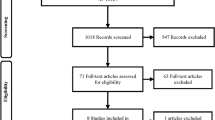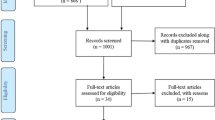ABSTRACT
Background
Some surgeons perform flexible fiberoptic laryngoscopy (FFL) in all patients prior to thyroid cancer operations. Given the low likelihood of recurrent laryngeal nerve (RLN) or aerodigestive invasion in clinically low-risk thyroid cancers, the value of routine FFL in this group is controversial. We hypothesized that routine preoperative FFL would not be cost effective in low-risk differentiated thyroid cancer (DTC).
Methods
A decision model was constructed comparing preoperative FFL versus surgery without FFL in a clinical stage T2 N0 DTC patient without voice symptoms. Total thyroidectomy and definitive hemithyroidectomy were both modeled as possible initial surgical approaches. Outcome probabilities and their corresponding utilities were estimated via literature review, and costs were estimated using Medicare reimbursement data. Sensitivity analysis was conducted to examine the uncertainty of cost, probability, and utility estimates in the model.
Results
When the initial surgical strategy was total thyroidectomy, routine preoperative FFL produced an incremental cost of $183 and an incremental effectiveness of 0.000126 quality-adjusted life-years (QALYs). The incremental cost-effectiveness ratio (ICER) for routine FFL prior to total thyroidectomy was $1.45 million/QALY, exceeding the $100,000/QALY threshold for cost effectiveness. Routine FFL became cost effective if the preoperative probability of asymptomatic vocal cord paralysis increased from 1.0% to 4.9%, or if the cost of preoperative FFL decreased from $128 to $27. Changing the extent of initial surgery to hemithyroidectomy produced a higher ICER for routine FFL of $1.7 million/QALY.
Conclusion
Routine preoperative FFL is not cost effective in asymptomatic patients with sonographically low-risk DTC, regardless of the initial planned extent of surgery.




Similar content being viewed by others
REFERENCES
Perros P, Boelaert K, Colley S, et al. Guidelines for the management of thyroid cancer. Clin Endocrinol. 2014;81:1–122.
Mihai R, Randolph G. Pre- and postoperative laryngeal exam in thyroid and parathyroid surgery. In: Randolph G, ed. Surgery of the thyroid and parathyroid glands. 2nd ed. Philadelphia, PA: Saunders; 2013:149–155.
Farrag TY, Samlan RA, Lin FR, Tufano RP. The utility of evaluating true vocal fold motion before thyroid surgery. Laryngoscope. 2006;116(2):235–238.
Lang BH, Chu KK, Tsang RK, Wong KP, Wong BY. Evaluating the incidence, clinical significance and predictors for vocal cord palsy and incidental laryngopharyngeal conditions before elective thyroidectomy: is there a case for routine laryngoscopic examination? World J Surg. 2014;38(2):385–391.
Schlosser K, Zeuner M, Wagner M, et al. Laryngoscopy in thyroid surgery—essential standard or unnecessary routine? Surgery. 2007;142(6):858–864. e852.
Randolph GW, Kamani D. The importance of preoperative laryngoscopy in patients undergoing thyroidectomy: voice, vocal cord function, and the preoperative detection of invasive thyroid malignancy. Surgery. 2006;139(3):357–362.
Hodin R, Clark O, Doherty G, Grant C, Heller K, Weigel R. Voice issues and laryngoscopy in thyroid surgery patients. Surgery. 2013;154(1):46–47.
Sinclair C, Duke W, Barbu A, Randolph G. Laryngeal Exam Indications and Techniques. In: Randolph G, ed. The recurrent and superior laryngeal nerves. Cham: Springer International Publishing; 2016:17–29.
Haugen BR, Alexander EK, Bible KC, et al. 2015 American Thyroid Association management guidelines for adult patients with thyroid nodules and differentiated thyroid cancer: the American Thyroid Association guidelines task force on thyroid nodules and differentiated thyroid cancer. Thyroid. 2016;26(1):1–133.
Grover G, Sadler GP, Mihai R. Morbidity after thyroid surgery: patient perspective. Laryngoscope. 2013;123(9):2319–2323.
Lombardi CP, Raffaelli M, De Crea C, et al. Long-term outcome of functional post-thyroidectomy voice and swallowing symptoms. Surgery. 2009;146(6):1174–1181.
Soylu L, Ozbas S, Uslu HY, Kocak S. The evaluation of the causes of subjective voice disturbances after thyroid surgery. Am J Surg.. 2007;194(3):317–322.
Stojadinovic A, Henry LR, Howard RS, et al. Prospective trial of voice outcomes after thyroidectomy: evaluation of patient-reported and clinician-determined voice assessments in identifying postthyroidectomy dysphonia. Surgery. 2008;143(6):732–742.
Hanna BC, Brooker DS. A preliminary study of simple voice assessment in a routine clinical setting to predict vocal cord paralysis after thyroid or parathyroid surgery. Clin Otolaryngol. 2008;33(1):63–66.
Kocak S, Aydintug S, Ozbas S, Kocak I, Kucuk B, Baskan S. Evaluation of vocal cord function after thyroid surgery. Eur J Surg. 1999;165(3):183–186.
Mohil RS, Desai P, Narayan N, Sahoo M, Bhatnagar D, Venkatachalam VP. Recurrent laryngeal nerve and voice preservation: routine identification and appropriate assessment—two important steps in thyroid surgery. Ann R Coll Surg Engl. 2011;93(1):49–53.
Stojadinovic A, Shaha AR, Orlikoff RF, et al. Prospective functional voice assessment in patients undergoing thyroid surgery. Ann Surg. 2002;236(6):823–832.
Jarhult J, Lindestad PA, Nordenstrom J, Perbeck L. Routine examination of the vocal cords before and after thyroid and parathyroid surgery. Br J Surg. 1991;78(9):1116–1117.
Schlosser K, Zeuner M, Wagner M, et al. Laryngoscopy in thyroid surgery–essential standard or unnecessary routine? Surgery. 2007;142(6):858–864; discussion 864 e851–852.
Erbil Y, Barbaros U, Issever H, et al. Predictive factors for recurrent laryngeal nerve palsy and hypoparathyroidism after thyroid surgery. Clin Otolaryngol. 2007;32(1):32-37.
Lo CY, Kwok KF, Yuen PW. A prospective evaluation of recurrent laryngeal nerve paralysis during thyroidectomy. Arch Surg. 2000;135(2):204–207.
Misiolek M, Waler J, Namyslowski G, Kucharzewski M, Podwinski A, Czecior E. Recurrent laryngeal nerve palsy after thyroid cancer surgery: a laryngological and surgical problem. Eur Arch Otorhinolaryngol. 2001;258(9):460–462.
Sevim T. Risk factors for permanent laryngeal nerve paralysis in patients with thyroid carcinoma. Clin Otolaryngol. 2007;32(5):378–383.
Steurer M, Passler C, Denk DM, Schneider B, Niederle B, Bigenzahn W. Advantages of recurrent laryngeal nerve identification in thyroidectomy and parathyroidectomy and the importance of preoperative and postoperative laryngoscopic examination in more than 1000 nerves at risk. Laryngoscope. 2002;112(1):124–133.
Braithwaite RS, Meltzer DO, King JT, Jr., Leslie D, Roberts MS. What does the value of modern medicine say about the $50,000 per quality-adjusted life-year decision rule? Med Care. 2008;46(4):349–356.
Neumann PJ, Cohen JT, Weinstein MC. Updating cost-effectiveness–the curious resilience of the $50,000-per-QALY threshold. N Engl J Med. 2014;371(9):796–797.
Overview of the Medicare Physician Fee Schedule Search. 2017; https://www.cms.gov/apps/physician-fee-schedule/overview.aspx. Accessed 1 Sept 2017.
Shrime MG, Goldstein DP, Seaberg RM, et al. Cost-effective management of low-risk papillary thyroid carcinoma. Arch Otolaryngol Head Neck Surg. 2007;133(12):1245–1253.
Zanocco K, Elaraj D, Sturgeon C. Routine prophylactic central neck dissection for low-risk papillary thyroid cancer: a cost-effectiveness analysis. Surgery. 2013;154(6):1148–1155; discussion 1154–1145.
Consumer Price Index - Medical Care. 2017; http://data.bls.gov/timeseries/CUUR0000SAM?output_view=pct_12mths. Accessed 1 Sept 2017.
Neumann PJ, Sanders GD, Russell LB, Siegel JE, Ganiats TG. Cost effectiveness in health and medicine. 2nd ed. Oxford/New York: Oxford University Press; 2017.
Muennig P, Khan K. Designing and conducting cost-effectiveness analyses in medicine and health care. 1st ed. San Francisco: Jossey-Bass; 2002.
Chandrasekhar SS, Randolph GW, Seidman MD, et al. Clinical practice guideline: improving voice outcomes after thyroid surgery. Otolaryngology—Head and Neck Surgery. 2013;148(6_suppl):S1–S37.
Farrag TY, Samlan RA, Lin FR, Tufano RP. The utility of evaluating true vocal fold motion before thyroid surgery. Laryngoscope. 2006;116(2):235–238.
Lang BH, Wong CK, Tsang RK, Wong KP, Wong BY. Evaluating the cost-effectiveness of laryngeal examination after elective total thyroidectomy. Ann Surg Oncol. 2014;21(11):3548–3556.
Wong KP, Lang BH, Ng SH, Cheung CY, Chan CT, Lo CY. A prospective, assessor-blind evaluation of surgeon-performed transcutaneous laryngeal ultrasonography in vocal cord examination before and after thyroidectomy. Surgery. 2013;154(6):1158–1164; discussion 1164–1155.
Carneiro-Pla D, Miller BS, Wilhelm SM, et al. Feasibility of surgeon-performed transcutaneous vocal cord ultrasonography in identifying vocal cord mobility: A multi-institutional experience. Surgery. 2014;156(6):1597–1602.
Barker M, Dort J. Laryngeal examination: a comparison of mirror examination with a rigid lens system. J Otolaryngol. 1991;20(2):100–103.
Lacoste L, Karayan J, Lehuedé M, et al. A comparison of direct, indirect, and fiberoptic laryngoscopy to evaluate vocal cord paralysis after thyroid surgery. Thyroid. 1996;6(1):17–21.
Sejean K, Calmus S, Durand-Zaleski I, et al. Surgery versus medical follow-up in patients with asymptomatic primary hyperparathyroidism: a decision analysis. Eur J Endocrinol. 2005;153(6):915–927.
In H, Pearce EN, Wong AK, Burgess JF, McAneny DB, Rosen JE. Treatment options for Graves disease: a cost-effectiveness analysis. J Am Coll Surg. 2009;209(2):170–179 e171–172.
Leiker AJ, Yen TW, Cheung K, Evans DB, Wang TS. Cost analysis of thyroid lobectomy and intraoperative frozen section versus total thyroidectomy in patients with a cytologic diagnosis of “suspicious for papillary thyroid cancer”. Surgery. 2013;154(6):1307–1313; discussion 1313–1304.
Wong CK, Lang BH. A cost-utility analysis for prophylactic central neck dissection in clinically nodal-negative papillary thyroid carcinoma. Ann Surg Oncol. 2014;21(3):767–777.
ACKNOWLEDGMENTS
Preliminary results from this study were presented during the panel discussion “Raising Our Voices” at the 2014 Annual Meeting of the American Association of Endocrine Surgeons, Boston, MA, USA, 27–29 April 2014.
DISCLOSURES
Julie Ann Sosa is a member of the Data Monitoring Committee of the Medullary Thyroid Cancer Consortium Registry supported by GlaxoSmithKline, Novo Nordisk, Astra Zeneca, and Eli Lilly.
Author information
Authors and Affiliations
Corresponding author
Rights and permissions
About this article
Cite this article
Zanocco, K., Kaltman, D.J., Wu, J.X. et al. Cost Effectiveness of Routine Laryngoscopy in the Surgical Treatment of Differentiated Thyroid Cancer. Ann Surg Oncol 25, 949–956 (2018). https://doi.org/10.1245/s10434-018-6356-2
Received:
Published:
Issue Date:
DOI: https://doi.org/10.1245/s10434-018-6356-2




